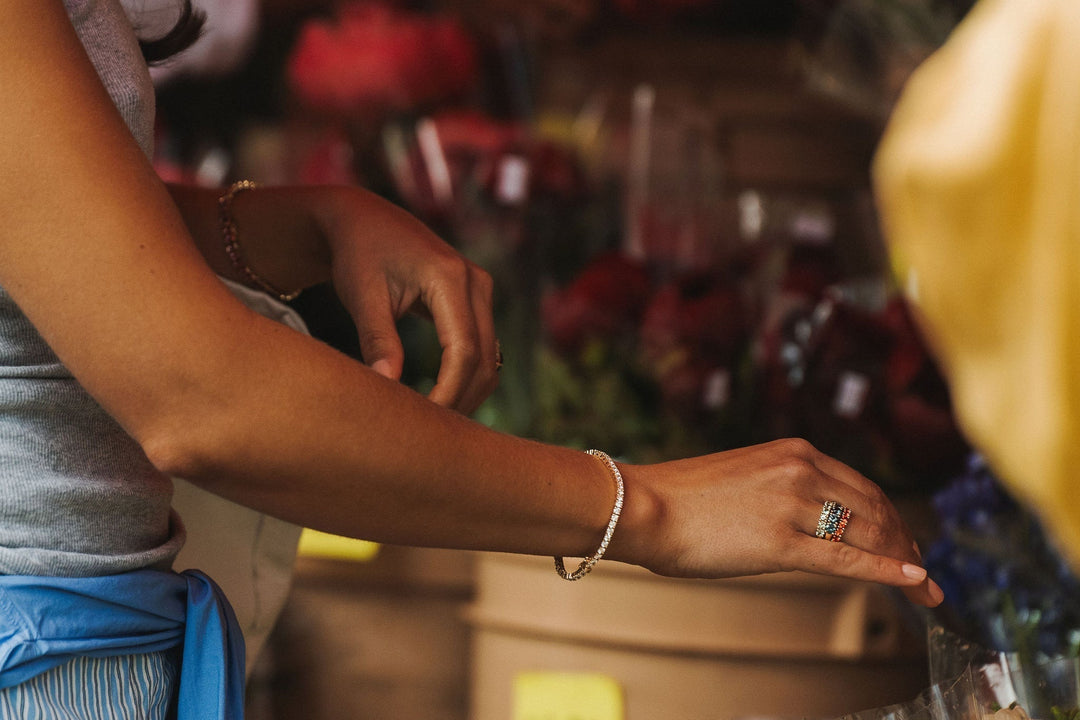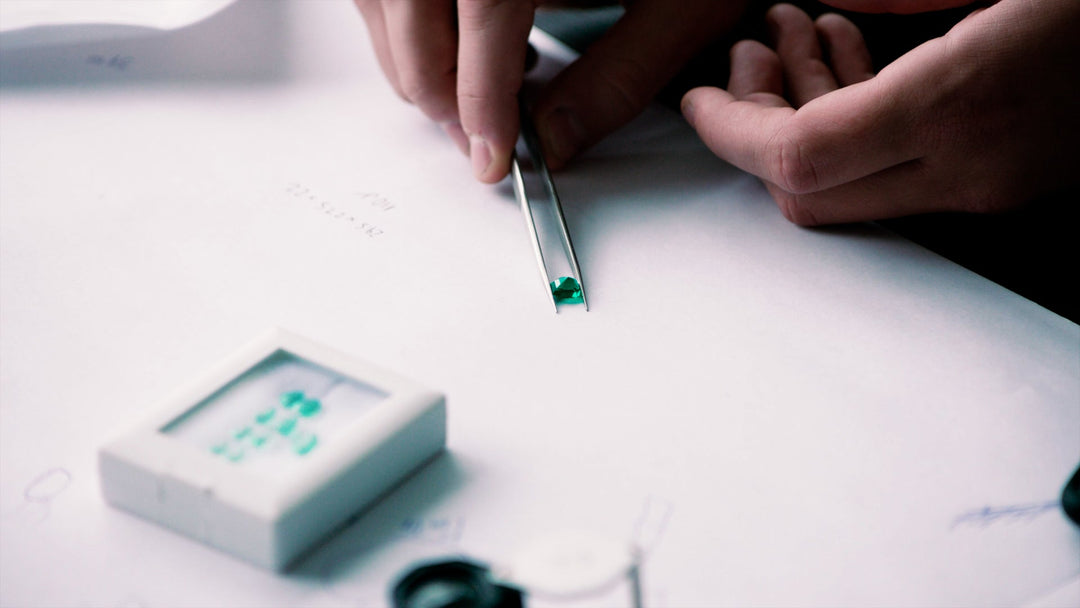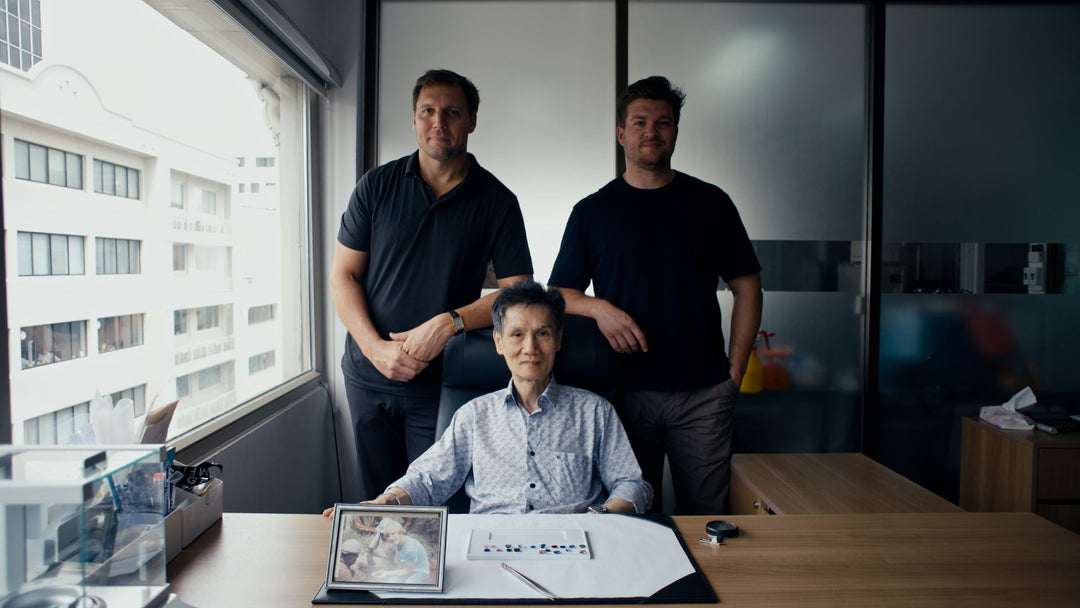The Finest Emeralds
Technically, my first encounter with emeralds would’ve been playing Sonic the Hedgehog on Sega Genesis. Officially, my first real-life experience was slightly less reminiscent of a seizure inducing acid trip. I was 6 years old and my Opa was then, as he is now, a wholesaler in the jewelry business. When my Oma was out with my Mom, and my Dad was away fishing, my Opa was tasked with the babysitting. Where my Oma would give me German candy and chocolate, my Opa would give me emeralds. Really though, it sounds a lot cooler than it was; they were the unsold, undesirable, dull pieces left from his sales trips and I kept them in an unmarked box under my bed. Once under my bed, the emeralds were forgotten about in favour of Lego and WWF figures, but the stories accompanying them persisted.
To look at my Opa, is to see a portly German man wearing track pants, a Costco golf shirt, and glasses who would drive his SUV to his mail box if he could.

But, to listen to him speak is to be enchanted. Just picture the storyteller that would emerge if you combined Frank Costanza, Don Cherry, the Dad from Big Fish, Barack Obama, and Roald Dahl. Now, set their stories against the backdrop of any Indiana Jones movie. The travel, the distance, the (alleged) smuggling; the story accompanying every emerald instantly turned that pale green colour into a lusher, richer, shade of vivid forest green. Basically, put him in Glengarry Glen Ross and there’s no way he would ever be forced to wait for new leads.
Certainly, there have been times when I’ve had reason to doubt the legitimacy of these tales. But, for me, that was the first core lesson of gemstones. The better the story, the better the stone. The second lesson being, if I nodded along for long enough, he would eventually dig into his pockets and give me a piece of fine German chocolate.
That said, when it came to the emeralds and the stories that went along with them, one thing he didn’t exaggerate was how long it took to get to the Colombian mines. One road in, one road out and you were accompanied by security guards and armed escorts. However, even in that type of environment, or maybe because of that type of environment, he was able to develop real friendships with the countless, interesting people he met along the way. It goes without saying (but I’m going to anyways) that business is done very differently today than it was fifty years. But, when I think about the way my Opa described the journey - the jungle, the mines, the travel - so much of it still holds true. The jewelry business is a relationship business and access to the top producing mining regions in Colombia is still extremely limited simply by the geography. It’s still one road in, one road out for most mines and deposits around the Muzo region.
And then there’s the people. Hard working, kind and eager. These people loved to smile and seemed stress free, far away from the daily hustle of Bogota and very, very far from the long nights in Medellin. They’re always excited to see a new face and judge how much they knew about an emerald simply by how they held it. The more casual and nonchalant, the more knowledgeable you will be perceived to be. Pro tip: don’t take this same tact when holding your friends newborn baby for the first time.

For example, when they handed me this 27.00 carat rough gem, I didn’t want to stare too long, knowing they would up their opening price purely based on my first, natural expression. Emeralds, especially ones that hail from the Muzo and Chivor regions, are known for their quality and indescribable hues and tones. Believe it or not, emeralds possessing such fine clarity and colour have almost always commanded higher prices than fine diamonds and, when it comes to cut, Colombians are world renowned for their excellence and know their material better than anyone. Cutting emeralds - a notoriously fickle and included gemstone - is a skill all in itself. But, not every emerald is cut equally. When buying rough emeralds, it’s imperative to have a veteran buyer who can assess potential yields and grade on the spot. It sounds simple enough but the pressure ramps up slightly when you are in the searing heat, with sweat dripping down your brow, under the judging, watchful eye of the gems owner, while small machinery works in the background, and armed soldiers fiddle with their military grade weapons a few paces away.
As I mentioned, it was sometimes difficult to discern fact from fiction when it came to my Opa’s stories. Because of that, I thought the stories I heard beforehand, from him and others in the business, and from the (gem) dealers in Bogota were from a world long gone, if it ever existed at all. Like a memory or a fleeting feeling that can’t be relived, I wasn’t sure if the quality of the emeralds themselves would be as I had heard, or imagined.
I was wrong. Everything about Muzo, from its vast jungle, to its people, to seeing some of the world’s finest and most fabled emeralds in their natural environment made me feel as if I had travelled back in time. Despite the world around it becoming more advanced, developed, and congested, this region maintains the rugged, beautiful, raw identity that has defined it for over two centuries.

Part of growing up is learning the stories you were told weren’t necessarily accurate. Jack never really climbed that beanstalk, pixie dust and Neverland aren’t really things, and no matter how many lamps you rub you’re not going to get three wishes. These can be difficult realities to confront but, in truth, it just makes it better when, as was the case with my Opa and his emeralds, one of those stories turns out to be true.









